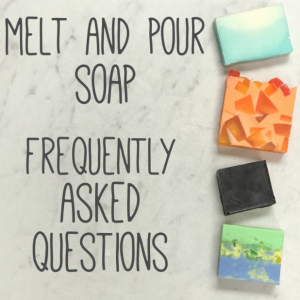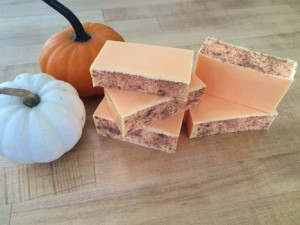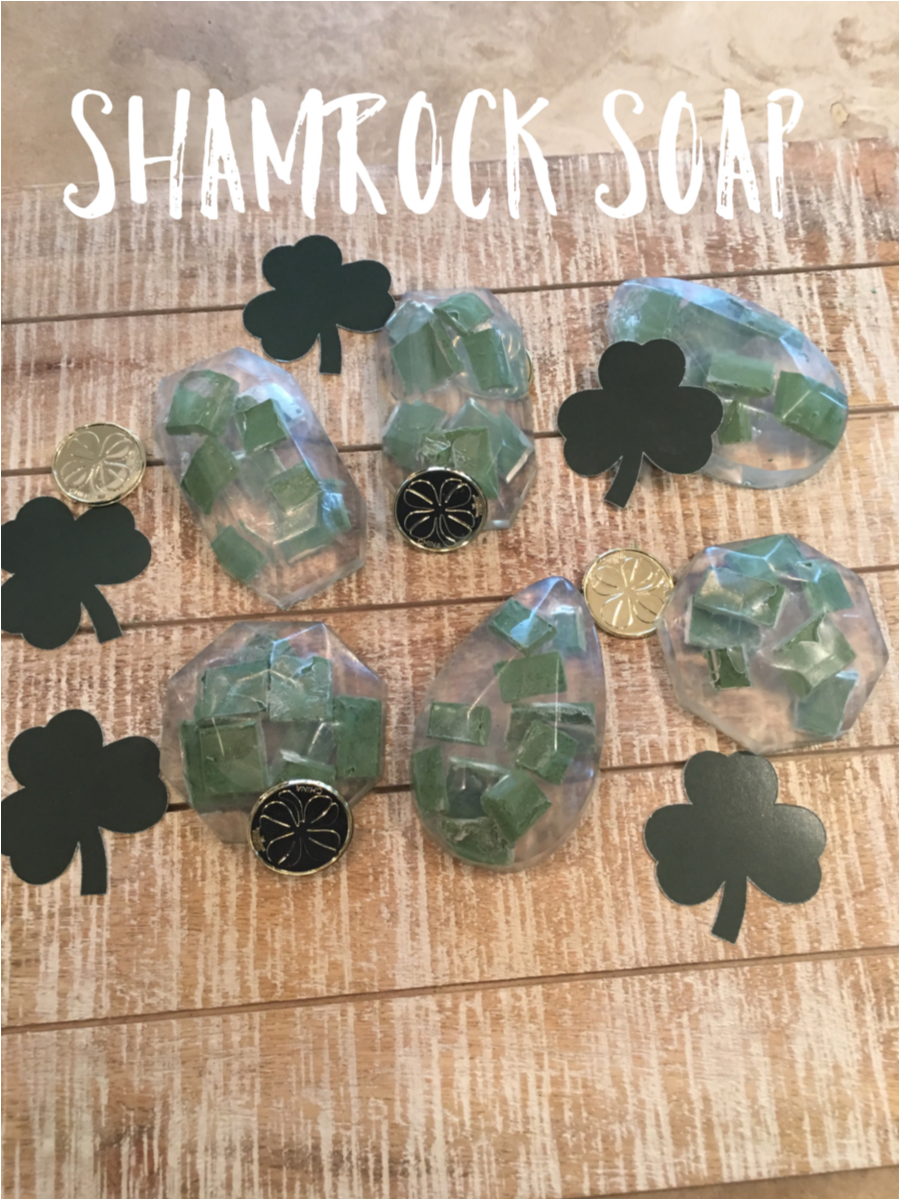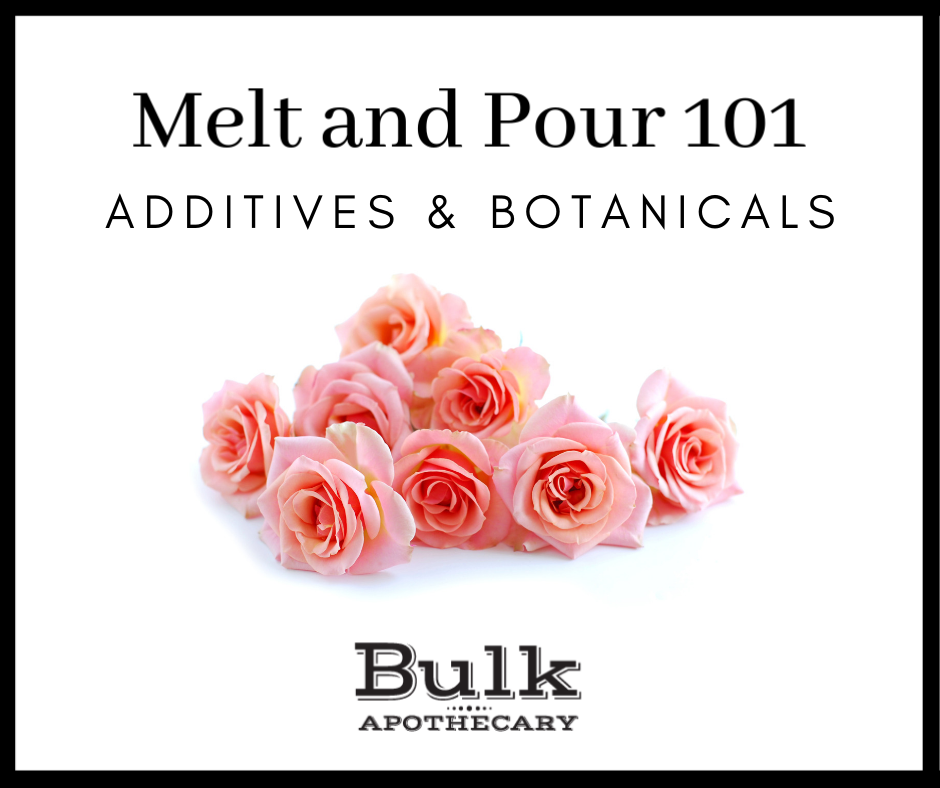Delving into a new hobby can seem intimidating and one of the most frequently asked questions we get here at Bulk is “where do I start?” – we are here to help! Melt and pour soapmaking is a rewarding activity because you get to create beautiful and unique gifts. You can sell your soap, use it as a fundraising item, for personal use or make soap just for fun! The possibilities are almost endless.
Q: What is the difference between melt and pour soap and cold process soap?
A: Melt and pour soap is a preformulated base that allows you to customize it by adding fragrances, botanicals and colors, without having to actually make the soap from the ground up. Cold process soap is made from oils (like olive or palm among many others) and sodium hydroxide. Mixing the two ingredients causes a chemical reaction that results in soap!
Q: What supplies do I need?
A: You will need access to a microwave or double boiler, a cutting board, a soap cutter or knife, melt and pour soap base, a spray bottle of rubbing alcohol and a soap mold, as well as any fragrance, color or botanicals you may desire.
Q: How do I prepare my soap?
A: The easiest way to prepare your soap is to cut it into cubes. This allows the soap to melt quicker. Some people prefer to microwave their soap base in 30-60 second intervals while stirring in between until liquefied. Alternatively, you may use a double boiler on the stove. This method is especially handy if you’re making a large batch of soap. Both methods are equally effective.
Q: How do I color my soap?
A: Several methods are available for this task. You may use pigment powder, colored soap blocks or even all-natural ingredients, such as beet root powder for a red appearance or sea clay to achieve a green/grey color. Food coloring may be used in small amounts as it is prone to staining. I find the easiest way to mix pigment powder is to dissolve it in a small amount of alcohol before adding the mixture to the soap base. The heat of the melted soap will burn off the alcohol, leaving the pigment behind.
Q: How much fragrance oil should I use for my soap?
A: The general rule of thumb is no more than 1 oz. of fragrance oil to 1 lb. of soap base. Any more than that can affect the lather as we discussed earlier. Please reach out to our superheroes at sales@bulkapothecary.com or call us at 1-888-728-7612 if you are looking for a specific usage rate on any fragrance oil.
Q: How much essential oil can I use?
A: That varies based on the oil. For example, a bar of soap scented with 10 drops of Peppermint essential oil will smell a lot stronger than a bar of soap scented with 10 drops of Lavender essential oil. This is the fun part where creativity gets to come in with mixing and matching the essential oils to create your very own fragrance blend!
Q: I used botanicals on my soap and it turned green. What happened?
A: Since botanicals are organic matter, they are can discolor the soap base. Add your botanicals to the soap at a lower temperature (Ideally around 120 F) to help avoid this. You can use a kitchen meat thermometer to check the temperature, or use an infrared thermometer. Additionally, a suspending soap base is especially helpful with getting the botanicals evenly spread through your soap.
Q: Why are there bubbles on top of my soap?
A: Bubbles may appear on the surface as you pour the soap into the mold. This is where the spray bottle of rubbing alcohol comes in handy – give the surface of the soap a quick spritz and watch the bubbles disappear!
Q: How long do I have to wait for my soap to set?
A: This all depends on the size of the mold you are using. For example, a 3×4 inch cavity mold would not need to cool as long as a 12×12 inch loaf mold. For smaller molds, six hours is recommended. Loaf molds, however, need to set longer, for about 12-24 hours. In addition, once the soap has set for about an hour, you may carefully transfer the soap to the refrigerator to help speed up the process.
Q: Why won’t my soap lather?
A: There are a few possibilities as to why this is happening. When making melt and pour soap, it is important to keep additives to a minimum. Remember, these are pre-formulated bases that are meant to be, well… melted and poured! Using too much oil or butter (such as shea butter) in your soap base can compromise the bubbling action. Many soap bases are already enriched with those skin-loving moisturizers, so if you do want to add more butters, start with a little bit such as 1 T. per 1 lb. of soap base.
Q: My soap discolored. What happened?
A: The usual culprit of this is a chemical called vanillin. Vanillin is an organic compound that is derived from… you guessed it – vanilla! Have you ever seen the dark brown color of vanilla extract? Vanillin is what gives some fragrances their sweetness. It is especially common in bakery scents and fragrances that have warm, deep or chocolate/vanilla base notes. The color of the fragrance oil will vary based on the vanillin content.
Q: I made a mess! How do I clean this up?
A: We’ve all had a spill now and again… not to worry! After the spilled melted soap has cooled, it’s easiest to scrape up the soap splatter with a credit card, then wipe down the surface with a damp paper towel. You can try to clean it up immediately, but in our experience, it’s easier to let it dry first.
Q: Something went wrong. Can I salvage my soap?
A: Yes! Never throw anything away. You will be amazed what all those little odds and ends will come in useful for later! We refer to this soap as “rebatch” soap. In the future, we will go over some recipes to use up all your happy accidents!
Do you have any more questions? Leave a comment below and we will be happy to help with your melt and pour soap journey!
Melt and Pour Soap FAQs





Using a soap mold with a 3×4″ cavity – how many soaps will 1 lb. of melt and pour soap make (if only adding essential oils and pigments)?
How many ounces can each cavity hold?
Hello,
In my experience the white soap glycerin base is not as sticky and melts faster.
Is there a reason or any additional ingredients that makes that happen?
I LOVE your bases but may stick with the white base only now.
Your prices are great and shipping is reasonable.
Customer service is also awesome. *Malia was her name I believe*
Thanks for the feedback; it could possibly be due to the natural Titanium Dioxide used to whiten the base.
Can you use a metal muffin pan instead of silicone or plastic molds
We haven’t tested it with a pan, but the silicone/plastic molds are much easier to work with in soap making.
I have but lined it with parchment paper.
Thanks for the tip!
I have a friend who says she is allergic to glycerin. Is there a M&P soap without glycerin that I can make for her? Thank you in advance for your help.
Dawn
How many bars can you make typically with 2lbs? I am looking at the goats milk base.
Thanks!
If each bar of soap is the standard 4 oz, you can get roughly 7 to 8 soap bars.
Wow, I just cannot wait to begin my new hobby, and the information on how to do it is all here…..I just need to figure out what I can melt the soap base in when I put in the microwave, and how much colour to add and when……but im sure its all in the wonderful blog…..I beleive im going to start making candles as well…..this is going to be such an adventure….Thanks very much, jacqueline
Hi. I have added dried orange peel, dried lemon peel, Lavender buds, peppermint leaves to my goats milk melt and pour soaps. The soap is wrapped in shrink wrap bags. The soap is only a week old and it is turning brown and black where the pieces of peel and leaves are. Should I have used a preservative? What can I do to remedy this?
The flowers turning brown is a reaction to the lye in soaps; this effect is minimized in melt and pour soap bases. You can possibly wait for the soap to dry a bit, then push the dried flowers into the soap, so that they hold. After that, you can spray the top of the flowers with a some rubbing alcohol. If you’ve layering the soap with the dried flowers, you can try this method as well.
I just tried my first batch of melt and pour soap with some lavender essential oil added. I think the fragrance is way too strong. Can I remelt the soap and mix it into another unscented batch.
You can try it, as it should help reduce the fragrance scent throw.
Hello,
What do I need to buy to make soaps?
Hi – I just wondered whether the melt and pour bases have any scent at all? I want to start very simply, and for various reasons, I’m keen to use natural, hypoallergenic ingredients and at least to begin with would prefer not to have to add fragrances. However, I’m aware that if the melt and pour bases are totally scent-free they won’t be very appealing! Could you confirm please? Thank you 🙂
Are your soap bases cruelty free? Very important to me. Thank you.
Does leaving the M&P soaps in the car for long times melts from the heat? I sold 2 and the person told me it melted.
It possibly can, as melt and pour soap are reactive to heat.
Can you tell me the max mil of fragrance for each 4ox bar you would recommend. I have done some research and the answers are alot different. I have been using one mil per oz of soap but it doesn’t seem strong enough. Can I go up to 7 mil per 4oz? Thanks so much for your time.
The general IFRA recommended fragrance usage rate for melt and pour bases is 1% to 1.15% of the total recipe’s weight/volume. In your case, we’ll use 1.15% of 4 oz. (4 oz. x 1.15%), which works out to be roughly 0.046 oz (1.3603824 milliliter) of fragrance.
Fragrance load ranges depend on many factors including: fragrance concentration, base make up, desired profile, Natural vs. Synthetic etc. Testing is a requisite for every customer to perform their own due diligence before committing to a large quantity of fragrance to purchase, no matter the application. You can check the IFRA Standards of compliance on usage rates for specific product types.
Does using unpure essential oils makes the soap to smell bad ? Also can I just melt the melt and pour soap base and mould into bars without adding any additives? Is just using this has any benefits??
It wasn’t our experience that the impure essential oils make the soap to smell bad; yes, you can use the melt and pour bases without any additives. In some cases it is advantageous to do so, when, for example, there is a sensitivity to fragrances, herbs, and so on.
How long does it takes to solidify for smaller mounds? Should I leave it overnight ?
Melt and pour bases usually take around two (2) hours to solidify.
I made my first batch of melt and pour soap last night. I used 2 lbs. of the SFIC LCP White M & P soap base. It did not turn out as I expected it to. I heated it up too long in the microwave, it developed a skin on top and got thick with lumps. I added my essential oils of 2 parts lavender and 1 part lemon and 1/4 cup lavender flowers. My soap smells very lemony without any scent of lavender which is ok but when I use my soap I cannot smell any scent on my skin. Is this normal? If not, what did I do wrong. I only used .3 oz of the combined EO.
I’m sorry to learn of your experience. Try cutting the base in small cubes,then microwave them in 30-second intervals; stir at each interval until the base is melted.
Ideally, IFRA guidelines should be followed regarding fragrance/essential oil usage; fragrance/essential oil load ranges depend on many factors including concentration, base make up, desired profile, Natural vs. Synthetic etc. Testing is a requisite for everyone to perform their own due diligence before committing to production, no matter the application. You can check the IFRA Standards of compliance on usage rates for specific product types. Essential oil usage can be particularly complicated, as each essential oil has its own guidelines that must be adhered to for compliance. For example, a 3% maximum usage rate of soaping oils in a cold process soaps is generally regraded as safe by cold process soapers, while melt and pour base soapers tend to recommend around 1 teaspoon (0.0.166667 oz.) per pound of melt and pour soap base for safety.
Based on Bulk Apothecary’s research, a usage rate of 1% to 1.5% of the total melt and pour base recipe is suggested by IFRA standards; in your case the maximum amount of essential oil (1.5% of the recipe’s volume/weight) that can be safely used in 2 lbs. of melt and pour soap is possibly 0.45 oz.
Sometimes when I add fragrances to my melt and pours, when it hardens and out of the mold the scent is barely noticeable. What am I doing wrong?
Can I add a small amount of simple syrup to increase lather in a goats milt melt and pour batch?
Hello I wanted to ask if you could mix melt and pour soap bases? Such as 1 lb Castile and 1 lb olive oil.
Yes, that’s fine; mixing creates awesome soaps!
Hi,
I was just wondering if with MP I can put on top of the loaf botanicals for decoration (like in CP) without them becoming brown.
Thanks
This may be a silly question, but I added whole milk to a melt and pour soap base. Do I need to refrigerate the soap’s now?
I have different melt and pour bases. I want to add sea salt and essential oil. How much sea salt can i add and how much essential oil? When do I add it? Is there a certain temperature or time to add before adding salt and oil before pouring into molds?
Ideally, IFRA guidelines should be followed regarding fragrance/essential oil usage; fragrance/essential oil load ranges depend on many factors including concentration, base make up, desired profile, Natural vs. Synthetic etc. Testing is a requisite for everyone to perform their own due diligence before committing to production, no matter the application. You can check the IFRA Standards of compliance on usage rates for specific product types. Essential oil usage can be particularly complicated, as each essential oil has its own guidelines that must be adhered to for compliance. For example, a 3% maximum usage rate of soaping oils in a cold process soaps is generally regraded as safe by cold process soapers, while melt and pour base soapers tend to recommend around 1 teaspoon (0.0.166667 oz.) per pound of melt and pour soap base for safety. Based on Bulk Apothecary’s research, a usage rate of 1% to 1.5% of the total melt and pour base recipe is suggested by IFRA standards
We don’t have a specific usage rate for the sea salt, but you can try 1/2 teaspoon per pound of soap base to start.
I am new to soap making but have done a lot of research before I dived in. I did my first run of melt and pour glycerin using botanicals (dried rose buds), however the rose buds turned a violet color and then a brownish black color and now they just look like cockroaches in my soaps….how do I prevent this!
Hi. I got a soap base, a bottle of glycerin n some add on powder, essential oil. How much glycerin should i put in the soap base?
I have melt and poor clear base that is at least 10 years old. Is it safe to use?
It is possible to melt it, but its effectiveness to mix with fragrance or essential oils/other additives might be compromised; you can test a small amount to determine its usefulness.
Hi, my oatmeals soap dried for 48 hours. The surface is so moisture n wet. I am wondering is it a normal? And how can I store it?
Yes it will sweat as it contains glycerin (which retains and preserves moisture, called a humectant). You can reduce soap sweating in the soap making area by controlling the humidity/temperature as much as possible when working on the soap. A dehumidifier; using aroma beads in air tight containers to store the unmolded soap; and allowing the soap to cool and dry naturally are a few tips to help with reduce soap sweating.
Hi, how long do homemade MP last?
Depending on the additives approximately 1 to 2 years.
Hi – I just tried my first batch of soaps. They were very bubbly so I now know to not stir so fast. However I had a hardening film on top of them moments after I poured into the mold. What could be the cause of this? I actually would get a film immediately if I stopped stirring as I put in color and scent. Did I not heat it up enough? I was using a double broil.
Hello! I just want to ask the following:
1. How long can I store the Homemade Melt and Pour Soap?
2. How long can I use the Homemade Melt and Pour Soap after opening the wrap?
Soap can last years, but if fragrance or other oils are added then:
1. The shortest shelf life of any of the additives, in most cases 1 year.
2. Approximately 1 year, but it will depend on usage.
Hello. How many ounces of melt & pour can I melt at one time? And is a stainless steel bowl recommended to use for the double boiling process>
We recommend melting between 16 and 32 oz. of Melt and Pour at once based on the size of your melting container! And yes, you can use stainless steel for the double boiling process! Sorry for the delay in response!